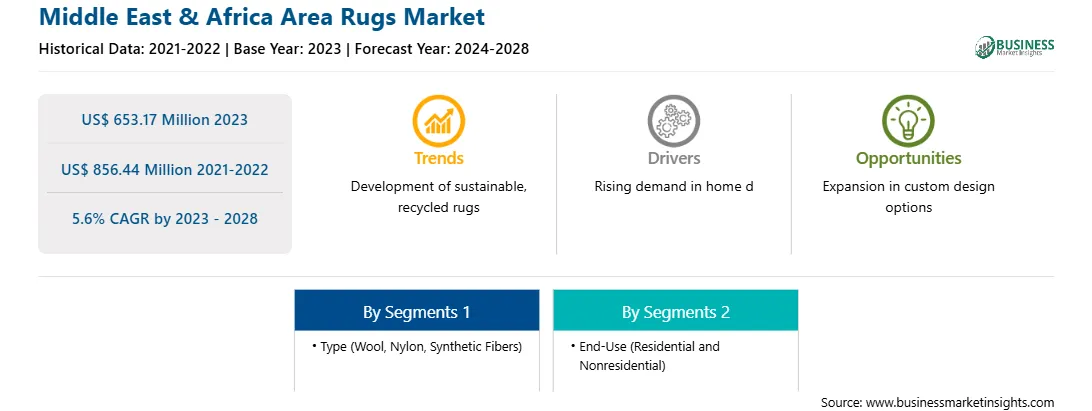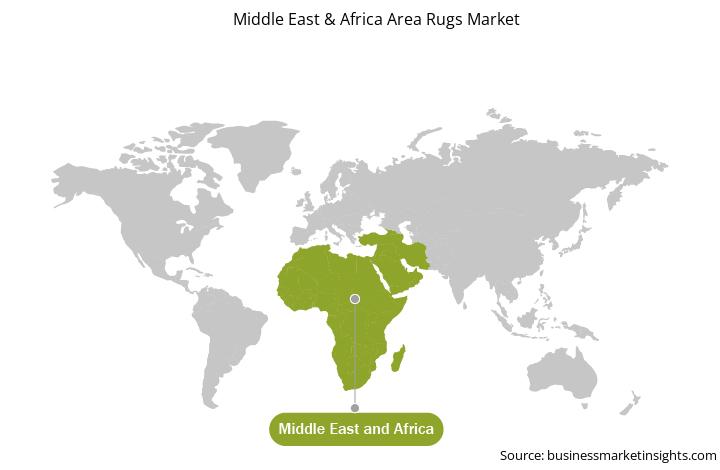In recent years, the demand for products made from natural materials has been on the rise. People in different countries across the region are becoming increasingly conscious of sustainability issues and the entire life cycle of products and materials right from the origin or source. These days, more and more people are choosing to shop for sustainable, natural, and bio-based products to protect the environment. The growing concern for the environment has also resulted in surging demand for area rugs made from natural fibers. Different natural fibers are used for making area rugs, including wool, cotton, jute, hemp, sisal, bamboo, seagrass, and many others. There are various advantages of using natural fiber for making area rugs. Many natural fiber rugs can be dyed in different colors and woven into beautiful and intricate patterns. Many natural fibers have coatings that cause them to repel dirt and be stain resistant. They are generally very strong, durable materials derived from renewable resources. They are also eco-friendly choices. The natural fiber rugs are easy to clean, adding to their appeal.
Wool is a renewable resource that is naturally resistant to staining. Wool area rugs are most commonly known for their durability. Wool fibers have an organic coating that causes them to naturally repel water and stains. This makes wool a naturally stain-resistant material. Wool area rugs are biodegradable and recyclable. Hence, they help cut down production costs, which benefits consumers and manufacturers. Hemp is another popular eco-friendly material used in the production of area rugs as it goes through minimal processing before being spun into yarn cords. Hemp rugs resist most dirt, and their tan hues help hide any dirt that is present. Seagrass is another natural fiber used in making area rugs. This type of area rug is becoming increasingly popular due to its benefits, such as biodegradable and eco-friendly nature, water and strain resistance, antimicrobial and mildew resistance properties, and many other benefits.
Further, various manufacturers are also highly focusing on developing area rugs made from natural fibers in response to growing consumer concern about the environment. Manufacturers are promoting green manufacturing by producing eco-friendly area rugs. Hence, the trend of surging demand for area rugs made from natural fibers is expected to boost the Middle East & Africa area rugs market growth during the forecast period.
The Middle East & Africa is segmented into South Africa, Saudi Arabia, the UAE, and others. Home renovation and remodeling activities are increasing in many countries of the Middle East and Africa, mainly due to growing government support for the same, especially in the developed countries of the region. In the Middle East and Africa, carpets and rugs are essential for any household. They can be used across other applications, including commercial, and institutional. As per the data provided by CBRE Group, the world’s largest commercial and investment firm, the total value of real estate projects in GCC currently stands at US$ 1.36 trillion; Saudi Arabia accounted for 64.5% of the total value. An area rug is added to a hard surface floor, such as hardwood, laminate, or tile. It can even be laid over a wall-to-wall carpet. The increase in infrastructural development activities in the Middle East and Africa, coupled with the rise in spending on affordable housing renovation, is boosting the growth of the residential construction sector. Area rugs are widely used to enhance home décor and give rooms a decorative look. This, in turn, is driving the Middle East & Africa area rugs market growth in the region.
Strategic insights for the Middle East & Africa Area Rugs provides data-driven analysis of the industry landscape, including current trends, key players, and regional nuances. These insights offer actionable recommendations, enabling readers to differentiate themselves from competitors by identifying untapped segments or developing unique value propositions. Leveraging data analytics, these insights help industry players anticipate the market shifts, whether investors, manufacturers, or other stakeholders. A future-oriented perspective is essential, helping stakeholders anticipate market shifts and position themselves for long-term success in this dynamic region. Ultimately, effective strategic insights empower readers to make informed decisions that drive profitability and achieve their business objectives within the market. The geographic scope of the Middle East & Africa Area Rugs refers to the specific areas in which a business operates and competes. Understanding local distinctions, such as diverse consumer preferences (e.g., demand for specific plug types or battery backup durations), varying economic conditions, and regulatory environments, is crucial for tailoring strategies to specific markets. Businesses can expand their reach by identifying underserved areas or adapting their offerings to meet local demands. A clear market focus allows for more effective resource allocation, targeted marketing campaigns, and better positioning against local competitors, ultimately driving growth in those targeted areas.Middle East & Africa Area Rugs Strategic Insights

Middle East & Africa Area Rugs Report Scope
Report Attribute
Details
Market size in 2023
US$ 653.17 Million
Market Size by 2028
US$ 856.44 Million
Global CAGR (2023 - 2028)
5.6%
Historical Data
2021-2022
Forecast period
2024-2028
Segments Covered
By Type
By End-Use
Regions and Countries Covered
Middle East and Africa
Market leaders and key company profiles
Middle East & Africa Area Rugs Regional Insights

Middle East & Africa Area Rugs Market Segmentation
The Middle East & Africa area rugs market is segmented into type, end-use, and country.
Based on type, the Middle East & Africa area rugs market is segmented into wool, nylon, synthetic fibers, and others. The synthetic fibers segment held the largest share of the Middle East & Africa area rugs market in 2023.
Based on end-use, the Middle East & Africa area rugs market is segmented into residential and nonresidential. The residential segment held the largest share of the Middle East & Africa area rugs market in 2023.
Based on country, the Middle East & Africa area rugs market is segmented into South Africa, Saudi Arabia, UAE, and the Rest of Middle East & Africa. The Rest of Middle East & Africa dominated the Middle East & Africa area rugs market in 2023.
Amer Rugs Inc, Faze Three Ltd, Golden Carpets Ltd, and Riztex USA Inc are some of the leading companies operating in the Middle East & Africa area rugs market.
The Middle East & Africa Area Rugs Market is valued at US$ 653.17 Million in 2023, it is projected to reach US$ 856.44 Million by 2028.
As per our report Middle East & Africa Area Rugs Market, the market size is valued at US$ 653.17 Million in 2023, projecting it to reach US$ 856.44 Million by 2028. This translates to a CAGR of approximately 5.6% during the forecast period.
The Middle East & Africa Area Rugs Market report typically cover these key segments-
The historic period, base year, and forecast period can vary slightly depending on the specific market research report. However, for the Middle East & Africa Area Rugs Market report:
The Middle East & Africa Area Rugs Market is populated by several key players, each contributing to its growth and innovation. Some of the major players include:
The Middle East & Africa Area Rugs Market report is valuable for diverse stakeholders, including:
Essentially, anyone involved in or considering involvement in the Middle East & Africa Area Rugs Market value chain can benefit from the information contained in a comprehensive market report.